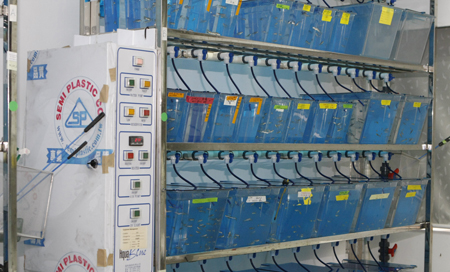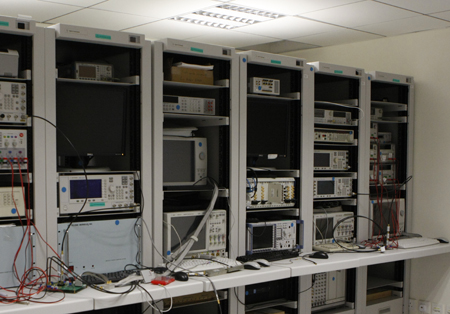One of the most challenging tasks involved in the process of relocating to the new campus is the relocation of the numerous high-tech labs.
Precision Instruments to Be Moved by Suppliers
Currently there are more than 60 dry and wet labs in the Faculty of Science and Technology (FST), the Institute of Chinese Medical Sciences (ICMS), and the two state key labs. The fact that the wet labs contain many chemical and hazardous substances adds to the difficulty of relocation. Relevant preparations began over two years ago. Detailed, systematic plans have been made with guidance from professional consultants to make sure that all precision instruments are moved to the new campus in a safe manner and resume operation within the shortest time possible.
FST Needs to Move over 6,200 Instruments
Lam Leong Hong, who is responsible for coordinating the relocation of FST labs, says that the shortage in human resource and the extraordinary care required in moving precision and heavy instruments present the biggest challenge. FST currently has 58 labs containing over 6,200 instruments, which will require 26 different suppliers to dismantle, move, re-assemble and re-calibrate. Large, heavy instruments will need to be moved with cranes. Luckily, some of FST’s labs on the new campus are on the ground floor, which will save some trouble of lifting the heavy instruments upstairs.
Special Techniques for Moving Samples
ICMS and the state key lab in Chinese medicine have five wet labs containing more than 600 precision instruments as well as large amounts of consumable goods, solutions, solid reagents, chemicals, various kinds of glass utensils, and frozen lab samples. Sandy Lao and Leon Lai, who are responsible for coordinating the relocation of ICMS labs, say that some of the frozen lab samples, like fungi, fungal spores, stem cells, cell lines and serum, need to be moved to the new campus with special techniques within one day, and put in the dedicated freezers on the new campus in a safe and accurate manner according to the labels.
ICMS Labs to Be Moved by Functional Area
Different functional areas of ICMS’s labs will require different transportation methods. For instance, the zebrafish and rodents in the labs will require special cages and equipment for transportation. The temperature, humidity, and the care with which they are handled during the transportation must also be carefully considered, because if they are scared, escape or fall ill in the process, the results of future lab experiments might be skewed. Leon says that preparations for the relocation of ICMS labs began around the time the new campus was approved. He and his colleagues made detailed lists and schedules to make sure that various jobs proceed in an orderly manner. He stresses that ICMS relocation will not start until after the Chinese medicine building on the new campus is fully ready, and the relocation will be carried out one functional area at a time to minimise impacts on the operation of labs.
Anti-shock Treatment Supervision
Leo Ng and Lewis Lei, who are responsible for coordinating the relocation of the state key lab in microelectronics, say that the lab has more than 80 precision instruments and servers, which are very sensitive, and so the greatest challenge is to supervise the anti-shock treatment on the part of the moving companies. Post-relocation re-calibration also needs to be very precise so as not to affect the accuracy of future research data.
Moving so many things on a tight schedule without sufficient staff is a challenge for the labs and everyone else at the university. But together we can make it happen.


